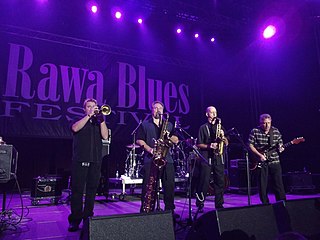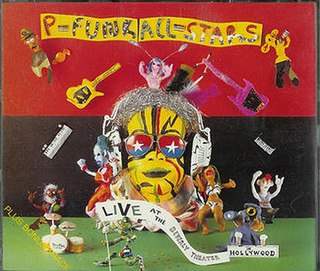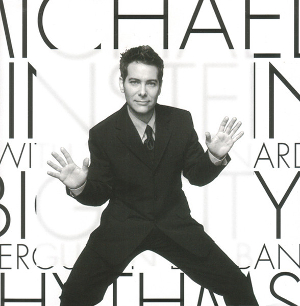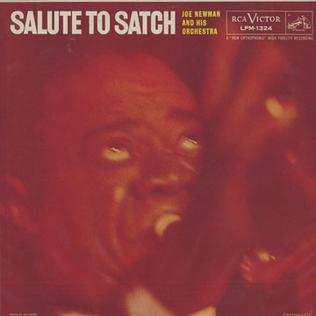Related Research Articles

A big band or jazz orchestra is a type of musical ensemble of jazz music that usually consists of ten or more musicians with four sections: saxophones, trumpets, trombones, and a rhythm section. Big bands originated during the early 1910s and dominated jazz in the early 1940s when swing was most popular. The term "big band" is also used to describe a genre of music, although this was not the only style of music played by big bands.

The Mills Blue Rhythm Band was an American big band active during the 1930s.
Spouge is a style of Barbadian popular music created by Jackie Opel in the 1960s. It is primarily a fusion of Jamaican ska with Trinidadian calypso, but is also influenced by a wide variety of musics from the British Isles and United States, including sea shanties, hymns, and spirituals. Spouge instrumentation originally consisted of cowbell, bass guitar, trap set, and various other electronic and percussion instruments, later augmented by saxophone, trombone, and trumpets. Of these, the cowbell and the guitar are widely seen as the most integral part of the instrumentation, and are said to reflect the African origin of much of Barbadian music.

Shep Fields was an American bandleader who led the Shep Fields and His Rippling Rhythm orchestra during the 1930s. His distinctive Rippling Rhythm sound was featured on big band remote broadcasts from historic hotels nationwide and remained popular with audiences from the 1930's into the early 1960's.

Roomful of Blues is an American jump blues and swing revival big band based in Rhode Island. With a recording career that spans over 50 years, they have toured worldwide and recorded many albums. Roomful of Blues, according to the Chicago Sun-Times, "Swagger, sway and swing with energy and precision". Since 1967, the group’s blend of swing, rock and roll, jump blues, boogie-woogie and soul has earned it five Grammy Award nominations and many other accolades, including seven Blues Music Awards. Billboard called the band "a tour de force of horn-fried blues…Roomful is so tight and so right." The Down Beat International Critics Poll has twice selected Roomful of Blues as Best Blues Band.

Peggy Gilbert, born Margaret Fern Knechtges, was an American jazz saxophonist and bandleader.
Edward Durham was an American jazz guitarist, trombonist, composer, and arranger. He was one of the pioneers of the electric guitar in jazz. The orchestras of Bennie Moten, Jimmie Lunceford, Count Basie, and Glenn Miller took great benefit from his composing and arranging skill.
The International Sweethearts of Rhythm was the first integrated all-women's band in the United States. During the 1940s the band featured some of the best female musicians of the day. They played swing and jazz on a national circuit that included the Apollo Theater in New York City, the Regal Theater in Chicago, and the Howard Theater in Washington, D.C. After a performance in Chicago in 1943, the Chicago Defender announced the band was "one of the hottest stage shows that ever raised the roof of the theater!" They have been labeled "the most prominent and probably best female aggregation of the Big Band era". During feminist movements of the 1960s and 1970s in America, the International Sweethearts of Rhythm became popular with feminist writers and musicologists who made it their goal to change the discourse on the history of jazz to include both men and women musicians. Flutist Antoinette Handy was one scholar who documented the story of these female musicians of color.

Anna Mae Winburn(néeDarden; August 13, 1913 – September 30, 1999) was an American vocalist and jazz bandleader who flourished beginning in the mid-1930s. An African-American, she is best known for having directed the International Sweethearts of Rhythm, an all-female big band that was perhaps one of the few – and one of the most – racially integrated dance-bands of the swing era. In 1944, the band was named as the country's favorite all-female orchestra in a DownBeat magazine poll.
Territory bands were dance bands that crisscrossed specific regions of the United States from the 1920s through the 1960s. Beginning in the 1920s, the bands typically had 8 to 12 musicians. These bands typically played one-nighters, six or seven nights a week at venues like VFW halls, Elks Lodges, Lions Clubs, hotel ballrooms, and the like. Francis Davis, jazz critic for The Village Voice, likened territory bands to "the Top 40 cover bands of their day, typically relying on stock arrangements of other ensembles' hits." He said, "many historians give much credit to territory bands for popularizing modern ballroom dancing that began during the World War I era with the influence of Vernon and Irene Castle."

Live at the Beverly Theater is a live album by the P-Funk All-Stars. It was recorded at the Beverly Theatre in California on April 23 and 24 of 1983 and was originally broadcast by the Westwood One radio network.

Ellington '55 is an album by American pianist, composer and bandleader Duke Ellington recorded for the Capitol label in 1953 and 1954 and released in 1955. The album features the Ellington Orchestra's performances of popular big band compositions and was reissued on CD with two bonus tracks in 1999.
The Darlings of Rhythm was an African American, all-female swing band from the 1940s.
The Harlem Playgirls was an African American swing band active in the Midwest and throughout the United States from the mid-1930s to the early 1940s.

Big City Rhythms is a 1999 album by American vocalist Michael Feinstein accompanied by the Maynard Ferguson big band. It was Feinstein's second album for the Concord label, and his first with Maynard Ferguson.
The Kit McClure Band is an all-female big band and jazz combo begun by Kit McClure in 1982 at The Ritz in New York City. It eventually caught the attention of Cab Calloway and was signed to Island Records, where it toured with Robert Palmer for two years, playing to sold-out crowds at Radio City Music Hall and Garden State Arts Center, followed by eight tours of Japan. The band released its first album, Some Like It Hot, on its own label, Redhot Records, in 1990. The follow-up, Burning, in 1995, was produced by Teo Macero.
Women in jazz have contributed throughout the many eras of jazz history, both as performers and as composers, songwriters and bandleaders. While women such as Billie Holiday and Ella Fitzgerald were famous for their jazz singing, women have achieved much less recognition for their contributions as composers, bandleaders and instrumental performers. Other notable jazz women include piano player Lil Hardin Armstrong and jazz songwriters Irene Higginbotham and Dorothy Fields.

Salute to Satch is a tribute album to Louis Armstong by jazz trumpeter Joe Newman and His Orchestra recorded in 1956 for the RCA Victor label.
Ernestine Carroll Davis, better known as Tiny Davis, was an American jazz trumpeter and vocalist.
Rosalind Cron was an American alto-saxophonist. During the 1940s she played with the International Sweethearts of Rhythm, an all-female jazz big band. She toured and performed for American soldiers in post-war Europe and was broadcast on national and international radio.
References
- 1 2 3 4 5 6 7 8 9 10 Daniels, Douglas Henry (2006). One O'Clock Jump: The Unforgettable History of the Oklahoma City Blue Devils. Boston, Massachusetts: Beacon Press. pp. 196, 197.
- 1 2 3 4 5 6 7 Tucker, Sherrie (2000). Swing Shift: "All-Girl" Bands of the 1940s. Durham and London: Duke University Press. pp. 26, 50, 106, 204, 229.
- ↑ Erenberg, Lewis A. (1998). Swingin' the Dream: Big Band Jazz and the Rebirth of American Culture . Chicago: The University of Chicago Press. pp. 199. ISBN 0-226-21516-4.
- 1 2 3 4 5 6 Placksin, Sally (1982). American Women in Jazz: 1900 to the Present Their Words, Lives, and Music. New York: Seaview Books. pp. 149–151.